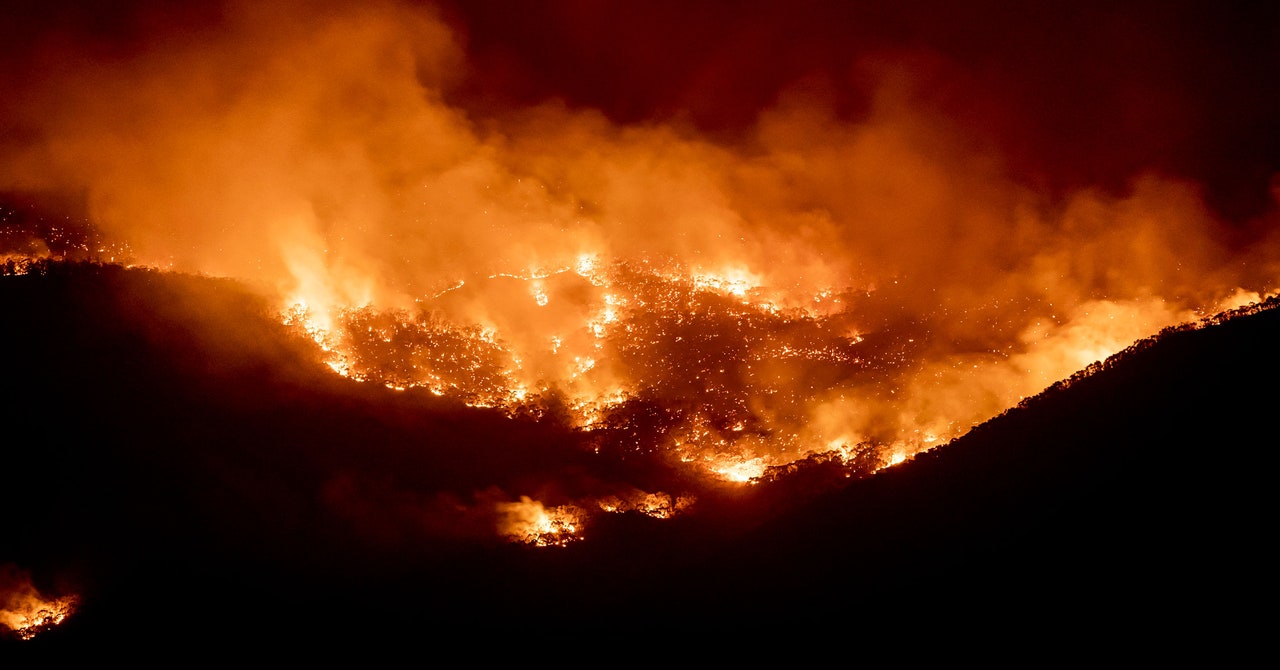This story originally appeared on Yale Environment 360 and is part of the Climate Desk collaboration.
Walking through the Bogandyera Nature Reserve, Luke Pearce, a fisheries manager for the Australian state of New South Wales, gestured down a steep hillside and described the scene three days after a wildfire roared through the area on January 11. “There were dead animals all through here,” he said, recalling the carcasses of kangaroos, feral deer, wallabies, wombats, possums, and birds of numerous species strewn across the charred landscape.
Pearce and I were hiking down to a section of the Mannus Creek, a small, high-altitude stream that runs into the Murray River system, Australia’s longest. The Green Valley-Talmalmo fire that tore through this area was one of the many massive bush fires that have made headlines for months as millions of acres of Australia have burned.
As gruesome as the scene had been on land that January day, Pearce’s main concern then, and in the ensuing weeks, has been for a fish, the Macquarie perch. This species, which grows to about 16 inches in length and can live for 25 years, was once abundant and commercially fished throughout the Murray River basin. Today it’s endangered and only found in a handful of sites across southeast Australia, including in this 3.7-mile section of the Mannus Creek. Even before the bush fires, Pearce had been thinking about moving perch out of the creek and into captivity because of declining water quality caused by drought; the fires made that urgent. He managed to net nine perch in the days following the fires—at least some were still alive, he was glad to find—and arranged to return with some colleagues to net more.
Then, on January 19, thunderstorms dumped large amounts of rain in the Mannus Creek catchment area. It was a relief for many, putting out fires and watering parched cattle paddocks, but the downpours triggered disaster in the creek. When Pearce arrived in Bogandyera Nature Reserve with his fish-netting teams around midday on January 20, they watched in “complete and utter despair” as huge volumes of ashy sediment, like dark, runny mud, came down the stream. “My initial feeling was that everything was going to die,” said Pearce, “I just didn’t know how anything was going to survive in that thick soup.”
Mannus Creek is one of many waterways in Australia that have been inundated with ash and debris following the devastating bush fires this spring and summer, killing fish and other aquatic life and fouling drinking water supplies. In some areas, scientists have mounted unprecedented efforts to create captive populations of endangered fish species threatened by the flood of ash into creeks and rivers.
Luiz Silva and Katie Doyle, freshwater fish scientists at Charles Sturt University, have now documented 14 sites wher

